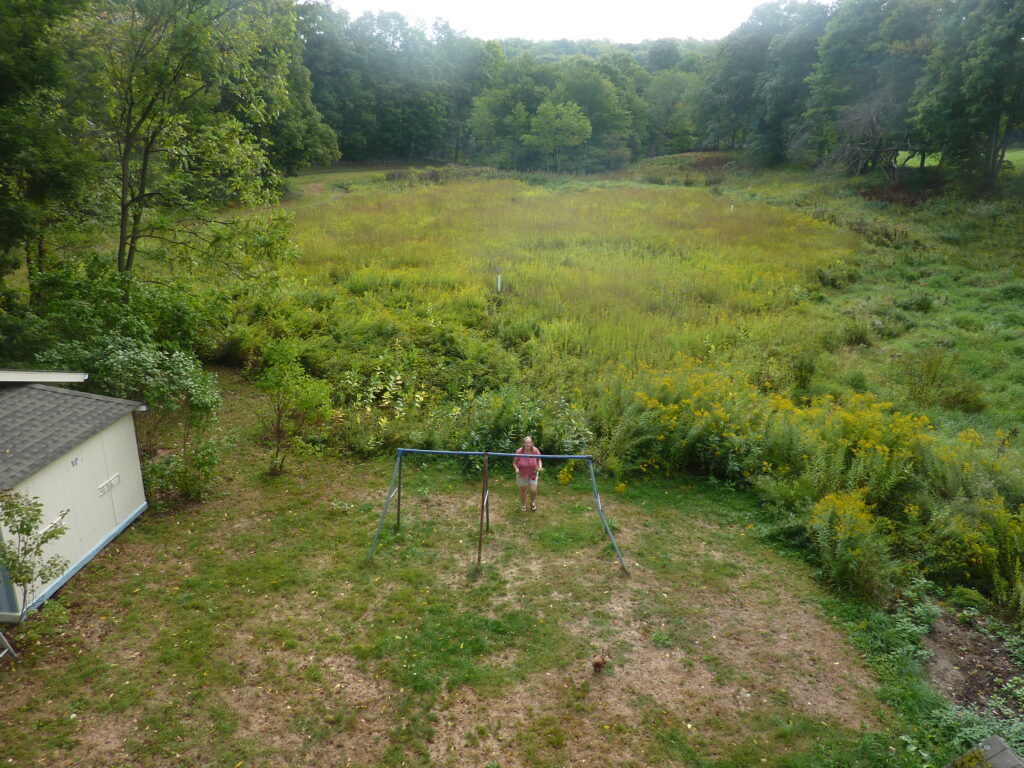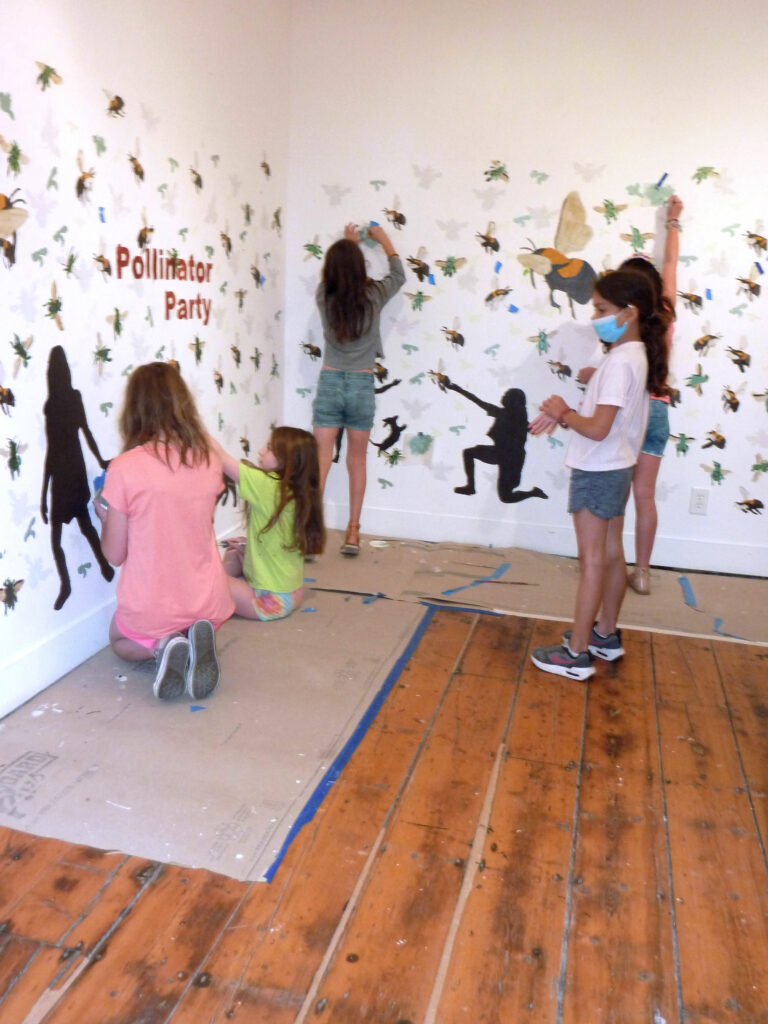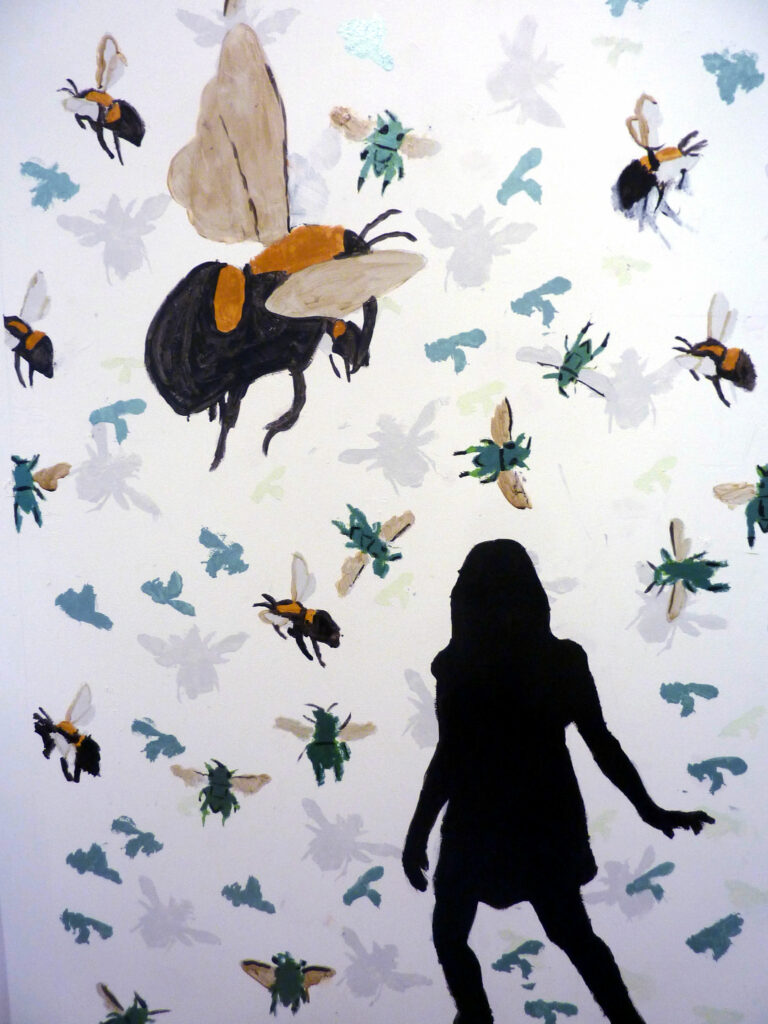Above the rafters of the lecture and display hall in the Highstead timber-frame barn, there is a loft that, among other things, houses a high-powered microscope. With COVID-19 restrictions keeping local butterfly enthusiast Victor DeMasi from his research site at the Yale Peabody Museum, that microscope has sparked a multi-year effort to identify the multitude of members of the order Lepidoptera that call the Highstead landscape home and has expanded to include a recent focus on members of the Apoidea family— bees and wasps.
“I connected with Highstead, and they offered a microscope and a nice, isolated area, so I kind of opened up a little bee lab there.” And for the last two and a half years, Victor’s time at Highstead has been dedicated to studying pollinating bees and participating in the United States Geological Survey Bee Inventory and Monitoring Lab to expand his knowledge of Apoidea. “In hindsight, it was just a wonderful thing to happen to me from the pandemic.”
Two and a half years later, the microscope has been joined by cases of various and intricately preserved insects that line every surface available.
In Search of Pollinators
Another recent collaboration between Victor and Highstead includes a survey of the pollinators local to Redding. “I was previously focused on butterflies up until about four years ago, but then I became interested in pollinating insects.”

Biologist Sammy Riccio, budding entomologist Lukas, and Highstead executive director Geordie Elkins teamed up with Victor to catalog pollinator insects and document the plants on which they are found. As an ongoing effort, the survey is maintained throughout the summer season. “Very few insects have been collected in western Connecticut. Connecticut insect collections mostly represent the center part of the state—near Yale and UConn and where students are located. So, we’re looking at an area that hasn’t really been scrutinized.”
The resulting census includes around 3,000 specimens and will serve as baseline data for future research and conservation efforts. “We made large collections and included special notations about where we found the insects and what flowers they were on. There are a lot of records of Apoidea, but the old records are not connected with specific plants. We’re now trying to record who is pollinating what, and what happens to that flower if its pollinator is not around.”
The census includes two sites— the Highstead barn meadow and Victor’s Redding home where he and spouse Roanna Metowski have cultivated and maintained a two-acre meadow to support butterflies and other pollinators.
Victor explains part of the process for monitoring specialized pollinators in his meadow. “Say you have black cohosh flowering. During its flowering period, black cohosh flowers over about a four-week period. I’ll make a sweep collection every one to two weeks to get the different pollinators that are coming to only black cohosh. And specifically, try to sort out if there are some specialized pollinators that just come to black cohosh and nothing else. So, there are a lot of specimens, and I have a lot of sorting out to do.”
Feeding the Appalachian Blue

Victor and Roanna’s meadow is a multifaceted local source for local and native plants, including black cohosh. “We rescued these plants from a future building site (with permission) and transplanted them to our property,” Victor explains. ”There’s a very rare butterfly in the state of Connecticut, the Appalachian Blue, and it feeds exclusively on black cohosh. So, we’re trying to cultivate more black cohosh on our property.”
While not chasing pollinators, Victor fosters creativity and inspiration through his entomology, native plant maintenance, and active mural painting projects with local youth. “I led a recent mural where we painted pollinator insects. The kids learned about the pollinators and at the same time, they painted them on a wall. It’s amazing at the end of the week how much the kids know about pollinators, and they own their artwork. I’m not allowed to touch their mural—so it’s a lot of fun.”
With its base in Redding, Connecticut, Highstead is a place where curiosity about the ecological world around us inspires collaboration with a lively and dedicated cadre of people like Victor, John Mcleran, and scores of other professionals and amateurs whose curiosity drives knowledge and understanding.


Photo credits: Victor DeMasi.